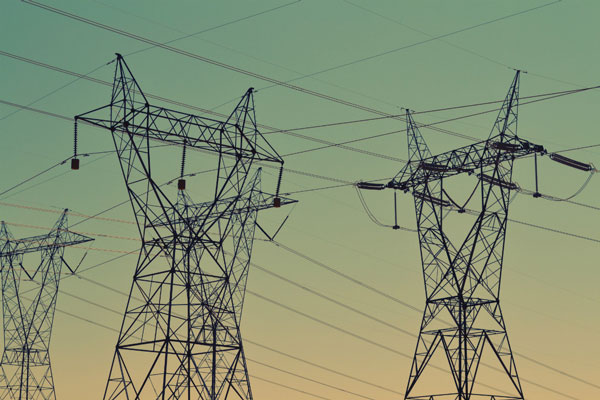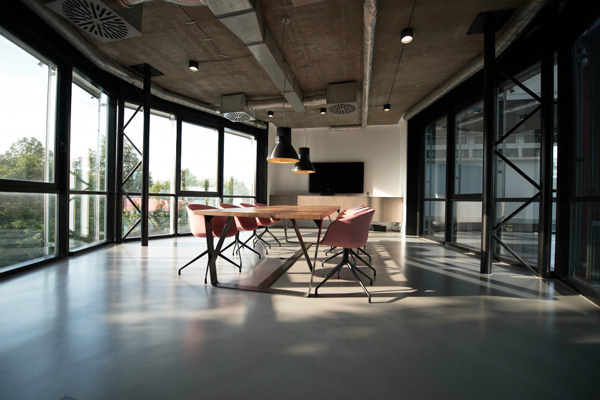
Commercial and industrial buildings in the US account for 50 percent of the country’s energy consumption, costing in excess of $400 billion a year.
Building owners and managers have a compelling reason, then, to spend less on energy, reduce consumption and lighten their carbon footprints. Fortunately, countless startups have created products or offer services to reach greater energy efficiency.
Here are 25 companies, in the US and abroad, committed to lightening the load.
1366 Technologies
1366 Technologies earned the praise of former U.S. Secretary of Energy Steven Chu, who called the company’s Direct Wafer technology for Silicon photovoltaics “a prime example of innovative brilliance.”
Silicon wafers account for about 40 percent of the cost of the average solar module, but the company’s breakthrough technology in solar photovoltaics cuts this by more than half while also reducing the energy needed to produce the wafers by more than 60 percent.
Axiom Exergy
Aimed specifically at supermarkets, Axiom Exergy has provided a way to maximize cold storage while minimizing energy output. The Refrigeration Battery is a retrofit solution that plugs into existing refrigeration systems. It harnesses thermal energy produced during off-peak hours and uses it when demand ramps up, lowering usage by 40 percent in peak periods.
With about 60 percent of consumption in supermarkets coming from refrigeration, it’s clear just how much money and energy can be saved.
Biscuit Labs
Biscuit Labs, based in San Francisco, is equipping buildings with AI to generate power locally via a microgrid with the ultimate aim of energy self-sufficiency. The sensing, control and microgrid offerings deliver increased efficiency across property portfolios for commercial building owners and managers.
Buddy
Buddy is a startup with offices in Adelaide, Australia, and Seattle. Specifically geared toward reducing buildings’ energy output, the Buddy Ohm uses IoT hardware, a scalable data infrastructure and operations portals to provide regular consumption updates and advice on how output can be lowered. Sensors are installed to track electricity use, gas consumption, water and steam consumption, and solar power generation, providing real-time feedback to simple dashboard services.
Choose Energy
Choose Energy, founded in 2008, has helped shift how consumers and small businesses shop for electricity and natural gas deals with a focus on clean technology and green services. By helping customers move to a completely renewable energy product, Choose Energy estimates its business customers can save up to 30 percent on energy bills.
Digital Lumens
Among other smart technologies, Digital Lumens has developed responsive lighting solutions that allow buildings to cut back on power consumption.
Through its cloud-based intelligence platform, SiteWorx, and its software, sensors and system integration, Digital Lumens connects lighting to the IoT, delivering control and analysis to users’ fingertips. Buildings equipped with SiteWorx can expect the same power and quality of lighting at 10 percent of the existing cost.

Ekotrope
Ekotrope’s software provides energy optimization before buildings are constructed. By inputting building requirements and occupants or owners’ energy goals, the software presents the best options to cut power consumption by analyzing efficiency and cost through a database and decision engine. The software then calculates the right combinations of heating systems and window glazing, or florescent lighting and attic insulation methods, for example.
Enmetric Systems
Enmetric Systems, based in Silicon Valley, applies IoT technology to commercial buildings to lower costs and boost efficiency. By connecting a building’s unmanaged devices to the internet, Enmetric turns brick and mortar into a smart building network. Intelligent plug-and-load hardware connects to the cloud while the software monitors energy use and expenditures. It can also be employed to create energy-use policies to manage power with rules-based automation.
enVerde
enVerde aims to transform waste into power. With the startling fact that the average US citizen produces 4.4 pounds of waste each day, it’s clear this is a worthy pursuit. The Minneapolis-based startup converts carbon-based waste into clean energy via catalytically driven processes. It has a proven track record of saving energy for businesses in the communities it operates.
Essess
Essess’ Thermal Analysis Program (TAP) acquires thermal data through multispectral imaging and 3D sensing, as well as computer vision and machine learning techniques to process, identify and analyze how best to increase buildings’ energy efficiency. TAP compiles thermal images in direct, email and web marketing campaigns to guide customers through a behavior program to make their buildings more efficient.
Flair Systems
Flair Systems saves buildings’ energy consumption by adapting supply to rooms and areas depending on the number of occupants. Placing control of HVAC systems at room level through its connected network of vents, sensors and software, the system integrates with thermostats, compressor and blower motors, and mini-split ductless systems.
Users can set the system to individual and group preferences, ensuring it adapts to maintain the needs of occupants even as their activities change.
Ice Energy
Ice Energy wants you to attach ice batteries to your building’s air-conditioning system. With cooling totaling about 40 percent of a building’s peak-energy use, batteries will significantly reduce cost and consumption without affecting building temperature — and provide a morale boost from a lighter carbon footprint.

Keewi
Devices plugged into wall outlets account for about 30–50 percent of power consumption in commercial buildings in the US. Put in monetary terms, this costs about $55 billion each year and is expected to climb.
Keewi uses smart plugs and off-the-shelf hardware sensors to collect consumption data. Through real-time analysis and participant engagement, Keewi promises up to 90 percent reduction in energy costs without any added work. Founded by Stanford University graduates, the company takes base-level audits of power consumption and provides schedules to maximize efficiency while reducing output.
LO3 Energy
LO3 Energy deals more specifically with energy savings in residential buildings, but it is not hard to see how this can be employed for commercial purposes, too. Premised on energy sharing within areas, LO3 Energy uses blockchain technology to enable energy trading between neighbors operating on a microgrid.
The idea is straightforward: Five buildings on one side of the street are fitted with solar panels, which generate power and sell it to the opposite buildings when the power-generating buildings don't need it. Bridging this gap in the street is a blockchain network to manage transactions.
PlugSmart
PlugSmart started in 2008, but it derives from a core team that had worked together for years before that. By focusing on lighting, mechanical and HVAC systems, PlugSmart provides energy-saving capabilities to commercial buildings, saving clients more than 35 percent of facility operation costs.
Power2Switch
Power2Switch promises a 31 percent decrease in electricity bills, and it only takes five minutes to start the process. Deregulation of the energy market means companies can choose their power suppliers even if they have to stick to the same distributors. While saving money is the main goal here, the company is also committed to tapping into green energy and making use of the rising number of alternative power suppliers that have entered the market in the past decade.
Seeder Energy
Seeder Energy, based in Shanghai, uses an online platform to connect the country’s building owners to suppliers and financiers to help them design, install and maintain solar power on their rooftops. Through a referral network, the startup empowers other entrepreneurs with the resources and network to start their own clean energy businesses.
Sefaira
Sefaira lays energy-saving foundations for new-build commercial facilities with its collaborative software. Accessed in the cloud, the Sefaira Architecture or Sefaira System — or a combined package offering — gives designers, architects and engineers access to the same projects so they can analyze plans, exchange data and review strategies to maximize the building’s performance. Able to plan and review HVAC use and CO2 emissions while maximizing daylight, this software aims to color buildings green before they are built.
SensorSuite
SensorSuite’s cloud-based digital building assistant uses a real-time sensor intelligence platform to connect managers of small and medium-sized properties to their buildings and the machines within. Operational risks are reduced while performance and efficiency are increased by allowing building managers to extract value out of assets, space and equipment.

SkyCool Systems
SkyCool Systems uses proprietary technology to eliminate water wastage in HVAC and refrigeration systems while also reducing power consumption. The roof-mounted water cooling panel requires no electricity for its sky-cooling method, which passively cools water and redistributes the cooling energy into the building’s systems.
With HVAC systems using 17 percent of electricity generated worldwide and emitting 10 percent of global greenhouse gas emissions, finding a way to soften the carbon footprint is essential.
Smappee
Smappee, which launched in the US in late 2014, gives business and household consumers the means to monitor their energy consumption. Easy to install, an electrician can have the Smappee Pro up and running within an hour. The product collates real-time data about how much energy is being consumed across groups of appliances or even individual devices, sending it to a user-friendly mobile app or online dashboard.
VG Smartglass
For office blocks and commercial buildings wanting smart glass solutions instead of clunky blinds, they’d be well advised to investigate VG Smartglass’ offerings. Controlled remotely via a mobile app or at the windows, partitions or doors themselves, SmarterShade does not use energy to change opacity.
By being able to transform glass from clear to completely dark, it blocks out the sun, reducing the need for air-conditioning. The technology is based on patterning polarized film, which come at a fraction of the cost of smart glass and can be applied to existing commercial windows.
Totem
Totem has developed a smart software platform for commercial facilities and retail centers to ensure advanced energy access and emergency resilience, as well as an integrated communications hub. Safeguarding against inevitable grid issues, Totem’s product offers more than 40 kWh of energy storage to power buildings should it be required.
With solar generation capabilities as well as infrastructure to charge electric vehicles and LED lights, Totem essentially provides an energy router for buildings to stay charged, as well as connectivity to the IoT for an integrated communication system and sensors to monitor and protect data storage.
Unplugg
Unplugg is a Portuguese startup that provides an API to owners of commercial buildings and private homes to forecast energy consumption by analyzing historical data to find patterns and predict future usage. The API keeps data, infrastructure and processes intact with simple installation. It provides users with specific methods through forecasting algorithms to improve consumption habits and automate energy-saving tasks for them.
Vebbu
Vebbu, based in Croatia, has developed a system to purify the air in buildings while also improving ventilation and recovering heat (already a mandatory requirement in Germany, for example).
Using a mobile app, building managers have access to real-time monitoring of CO2, volatile organic compounds, humidity, temperature and dust levels. Energy savings come from the heat recovery component of the design, which requires installation of a wall unit that runs at 10 kWh and can recover as much as 90 percent of heat captured in the air, reducing energy bills by 40 percent.
Credits:
Yolanda Sunseabass creatives
Fré Sonneveld
Nastuh Abootalebi

